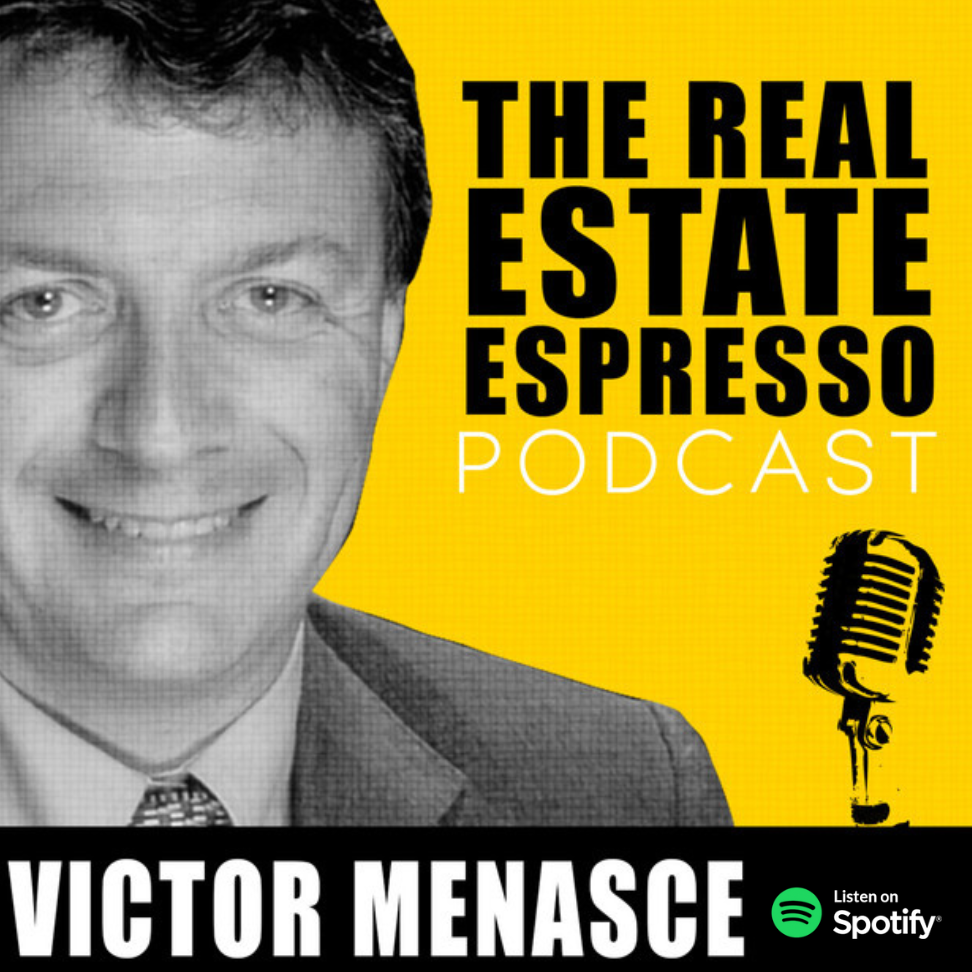Diligence On A Property With Insurance Claim History
Welcome to The Real Estate Espresso Podcast, your morning shot of what’s new in the world of real estate investing. I’m your host, Victor Menasce. On today’s show, we’re talking about how to forecast the future when it comes to a property that has had an insurance claim.
In fact, there are several risks that, taken together, can materially affect the outlook on an apartment acquisition. The property in question is a multifamily apartment project, located in an excellent location within a growing market. Built in the 1980s, we’re going to look at two risks in particular.
The first risk is that the property has about a 15% vacancy right now for the units that are rent-ready. Purchased a few years ago at a very high price, the forecast sell price is about 55% to 60% of the price paid a few years ago. Hence, the much lower purchase price makes it seem attractive, even in the current environment. The property sale is being forced by a lender, it’s likely that the sale may result in a short sale, where the purchase price will not fully cover the loan amount. This means that the previous owner made some mistakes, either in the way they underwrote the project, the way they operated it, or both.
The property has value-add potential which includes improvements to the amenities, building exteriors, interiors including kitchens, bathrooms, flooring, and in-unit laundry appliances. Additionally, a number of older air conditioning systems nearing the end of life could become cost-effective replacements, most efficiently by doing a volume program versus on a piecemeal basis when they fail.
Another 20% of the units are coming to the end of their lease terms within the next 90 days. So, at the time of closing the purchase, witnessing a shift in the vacancy picture is highly likely. If tenants don’t renew their leases, a 35% vacancy can result. This sounds like a scary proposition at first. However, in a value-add project, having vacant apartments isn’t necessarily negative. It allows for swift completion of work and quickly making improvements, as occupied units cannot be improved.
Nevertheless, even after completing the unit improvements, these apartments will retain their eight foot ceilings, significantly lower than newer nine-foot or higher ceilings in the market. The positioning of the product, even when improved, will never compete directly with the newer product in the market with nine-foot ceilings. After all, the buildings are almost 40 years old.
There remains plenty of life in these buildings, but there’s a definite difference between the 1970s and earlier products versus 1980s products. Construction methods change significantly between the two decades. The subject buildings, hence, are right on the cusp. They could be classed as newer product, or thought of as much older product, depending on how they are positioned.
The second factor at play here is that the property had a fire that affected about 10% of the units. Among these, 5% were destroyed completely, and the other 5% are damaged but can be restored. The insurance money, once received, will be enough to restore the damaged units but not enough to rebuild the destroyed ones. So, despite completing all renovation works, we’ll still be left with 5% fewer units compared to a year ago.
What puts us under scrutiny is the uncertainty in predicting future insurance rates, given that there has been a multi-million dollar claim in the property’s history. Even changing the insurance company doesn’t guarantee that the insurance rates won’t climb. While it’s safe to assume that insurance premiums will go up, it remains uncertain by how much. Added to the property taxes, which nibbles about 10% of the gross income and the property insurance that currently eats another 5% (that could double), nearly 20% of the gross income might go into property tax and insurance servicing. With management absorbing another 8%, you reach almost 30% expense ratio before even factoring in maintenance costs on the property. Supporting the new numbers requires significant rent hikes owing to higher current interest rates compared to a few years ago.
Like a lot of Texan markets, there’s been significant new supply introduced into the market. Although there’s still demand, most Texas markets appear oversupplied, at least for the next 24-36 months. Eventually that imbalance should self-correct. We do know, however, that units at the affordable end of the spectrum will always command high demand. Newer products in the market hunt tenants with leasing incentives and top-notch amenities, pulling residents very much from this type of property, which is positioned in the middle. It’s too tired to attract good tenants in its current condition and too old to compete with newer products on the market.
Buildings from the 1990s and early 2000s will probably compete more aggressively for tenants than an 1980s vintage property, even in a good location. It’s possible to look at the market data and compile a thesis for a range of improvements that should, in theory, work. However, that doesn’t guarantee they will work when implemented on the street.
We haven’t made any decisions on this particular property yet. As we’re still performing due diligence, we’re deeply questioning assumptions and risks when presented with information from the seller.
Many of you familiar with us know that as a development company, we also evaluate value-add opportunities as acquisition opportunities. These types of properties are in high demand, with not many on the market. We expect an auction for this property, which will probably go to the highest bidder who brings the seller confidence of closing.
The purpose of today’s show is to share the types of questions we ask of ourselves, and the types of questions we think you should be asking yourselves. As you think about that, have a fantastic rest of your day, go make some great things happen, and we’ll catch up with you again tomorrow.
Stay connected and discover more about my work in real estate by visiting and following me on various platforms:
Real Estate Espresso Podcast:
- 🎧 Spotify: The Real Estate Espresso Podcast
- 🌐 Website: www.victorjm.com
- 💼 LinkedIn: Victor Menasce
- 📺 YouTube: The Real Estate Espresso Podcast
- 📘 Facebook: www.facebook.com/realestateespresso
- 📧 Email: [email protected]
Y Street Capital:
- 🌐 Website: www.ystreetcapital.com
- 📘 Facebook: www.facebook.com/YStreetCapital
- 📸 Instagram: @ystreetcapital



